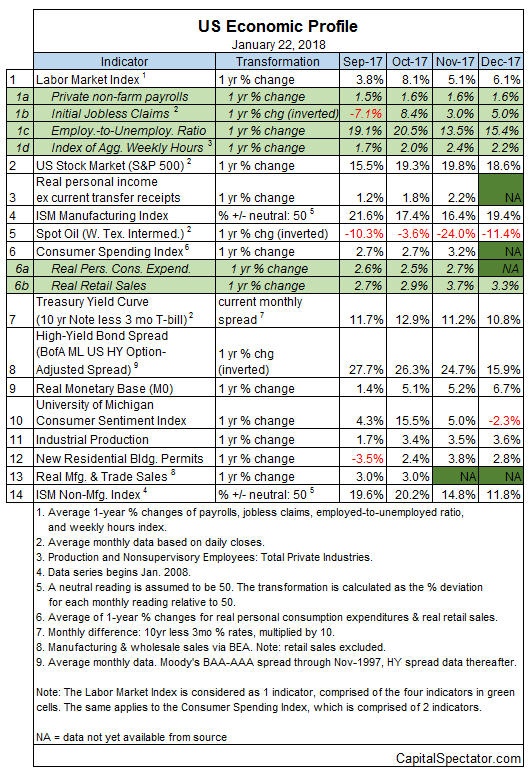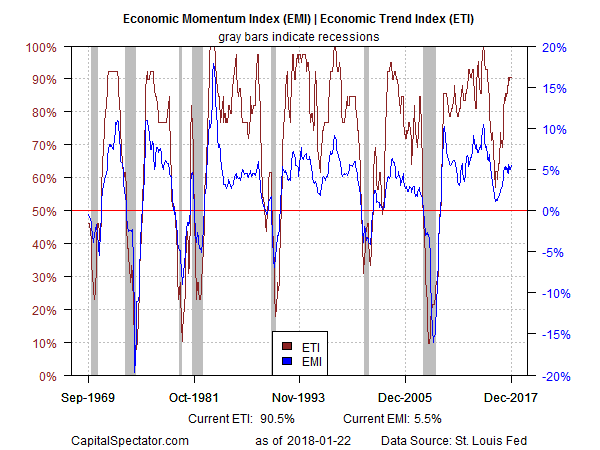US economic output remained strong in December, according to a review of key indicators. Echoing the profile in recent history, the numbers continue to reflect a virtually nil probability that a recession has started.
The near-term outlook also points to a continuation of the upbeat data through February. Although the revised econometric projection points to a mildly softer profile for next month, there’s still no sign of trouble on the immediate horizon for the US macro trend.
The positive outlook finds support in current estimates of the fourth-quarter GDP data that’s due on Friday. Wall Street economists are looking for a 3.0% increase in output, based on the median forecast via survey data published by CNBC last week. That’s slightly below Q3’s solid 3.2% rise, although the Atlanta Fed’s GDPNow model is looking for a stronger 3.4% advance. Note, too, that yesterday’s December report for the Chicago Fed National Activity Index also reflects a robust pace of economic activity in last year’s final month.
No wonder, then, that the current estimate of recession risk for the US remains effectively zero through December, based on The Capital Spectator’s business-cycle benchmarks, which reflect a diversified set of economic indicators.

Aggregating the data in the table above continues to translate into a strong positive trend overall. The Economic Trend and Momentum indices (ETI and EMI, respectively) remain well above their respective danger zones (50% for ETI and 0% for EMI). When/if the indexes slide below those tipping points, the declines will mark clear warning signs that recession risk is elevated and a new downturn is likely. The analysis is based on a methodology that’s profiled in my book on monitoring the business cycle.

Translating ETI’s historical values into recession-risk probabilities via a probit model also points to low business-cycle risk for the US through last month. Analyzing the data in this framework indicates that the odds remain effectively zero that NBER will declare December as the start of a new recession.

For some insight into the near-term outlook, consider how ETI may evolve as new data is published. One way to project values for this index is with an econometric technique known as an autoregressive integrated moving average (ARIMA) model, based on calculations via the “forecast” package in R. The ARIMA model calculates the missing data points for each indicator for each month — in this case through February 2018. (Note that October 2017 is currently the latest month with a full set of published data). Based on today’s projections, ETI is expected to remain well above its danger zone through next month.

Forecasts are always suspect, but recent projections of ETI for the near-term future have proven to be reliable guesstimates vs. the full set of published numbers that followed. That’s not surprising, given ETI’s design to capture the broad trend based on multiple indicators. Predicting individual components, by contrast, is subject to greater uncertainty. The assumption here is that while any one forecast for a given indicator will likely be wrong, the errors may cancel out to some degree by aggregating a broad set of predictions. That’s a reasonable view, according to the generally accurate historical record for the ETI forecasts in recent years.
The current projections (the four black dots in the chart above) suggest that the economy will continue to expand. The chart above also includes the range of vintage ETI projections published on these pages in previous months (blue bars), which you can compare with the actual data (red dots) that followed, based on current numbers.
